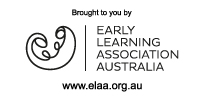Incident Reporting and Investigation

All incidents should be reported. This includes all injuries, work related illnesses, first aid treatments and, especially, near misses. These should all be reported regardless of how small or insignificant they may seem at the time. A small incident that occurs to a single person may seem insignificant until it is found that a similar incident has occurred many times in the past, indicating an underlying serious problem with a potential to cause a major incident at some time. The employer should have a system in place to record and store the reported information both in regard to reporting obligations under various legislation and funding agreements, and also with regard to ongoing analysis for management purposes.
Legal requirements for incident reporting
- Accident Compensation Act 1985 requires that employers keep a register of the injuries that occur in their workplace (in addition to the register required for children).
- Occupational Health and Safety Act 2004 requires employers to:
- keep information and records relating to the health and safety of the employees (Section 22)
- monitor the conditions at workplace/s under their control (Section 22)
- notify the WorkCover Authority (WorkSafe Division) about serious injuries/illnesses and dangerous occurrences (Sections 37 to 39).
Types of incident reports
- Near miss, incident and hazard report form – usually a general form found at most workplaces; sometimes it is separated into two or three different forms
- Register of injuries report form – often a book (in compliance with the Accident Compensation Act 1985), containing summary information about incidents that have occurred over a given period of time; this form can be combined with the Near miss, incident and hazard report form
- Accident compensation claim form – only applicable if an injured/ill employee is filing for compensation for the injuries or illnesses sustained in an incident; in these instances the employee believes the injuries/illnesses are a result of work related activities, so they are seeking compensation for medical costs and/or lost earnings
- Incident notification form – for use when WorkSafe Victoria needs to be notified of certain types of workplace incidents (serious injuries/ illnesses and dangerous occurrences). Verbal notification is required immediately. Written notification must be within 48 hours. This form is available from www.worksafe.vic.gov.au or by ringing their hotline on (03) 9641 1444 or toll free on 1800 136 089.
Notifiable incidents
- an employee
- an employer
- a child a family member, including other children
- a visitor
- a contractor or their personnel, including agency or labour hire personnel.
- The death of a person.
- A person requiring medical treatment within 48 hours of exposure to a substance.
- A person requiring immediate treatment as an inpatient in a hospital.
- A person requiring immediate medical treatment for:
- the amputation of any part of the person's body
- a serious head injury
- a serious eye injury
- the separation of the skin from the underlying tissue, such as de-gloving or scalping
- electric shock
- a spinal injury
- the loss of a bodily function serious lacerations.
- The collapse, overturning, failure or malfunction of, or damage to, any plant that the regulations prescribe must not be used unless the plant is licensed or registered.
- The collapse or failure of an excavation; or any shoring supporting an excavation.
- The collapse or partial collapse of any part of a building or structure.
- An implosion, explosion or fire.
- The escape, spillage or leakage of any substance, including dangerous goods.
- The fall or release from a height of any plant, substance or object.

